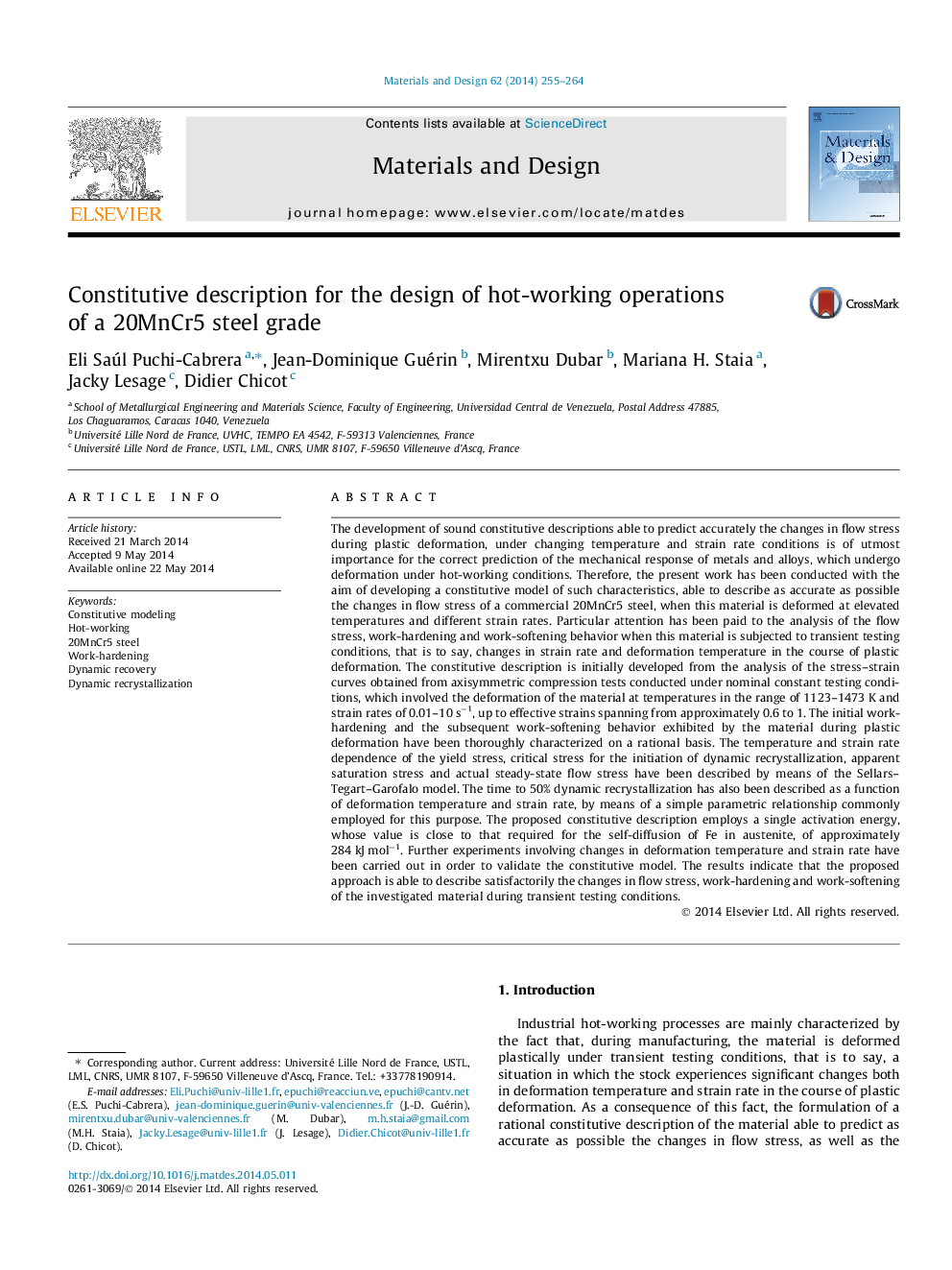| کد مقاله | کد نشریه | سال انتشار | مقاله انگلیسی | نسخه تمام متن |
|---|---|---|---|---|
| 829101 | 1470335 | 2014 | 10 صفحه PDF | دانلود رایگان |

• A constitutive description in differential form is proposed for a 20MnCr5 steel.
• One activation energy is employed for the description of the parameters involved.
• Axisymmetric compression tests were conducted at 850–1200 °C and 0.01–10 s−1.
• Temperature and strain rate dependence of important stress parameters is described.
• Model is validated by means of tests conducted under transient testing conditions.
The development of sound constitutive descriptions able to predict accurately the changes in flow stress during plastic deformation, under changing temperature and strain rate conditions is of utmost importance for the correct prediction of the mechanical response of metals and alloys, which undergo deformation under hot-working conditions. Therefore, the present work has been conducted with the aim of developing a constitutive model of such characteristics, able to describe as accurate as possible the changes in flow stress of a commercial 20MnCr5 steel, when this material is deformed at elevated temperatures and different strain rates. Particular attention has been paid to the analysis of the flow stress, work-hardening and work-softening behavior when this material is subjected to transient testing conditions, that is to say, changes in strain rate and deformation temperature in the course of plastic deformation. The constitutive description is initially developed from the analysis of the stress–strain curves obtained from axisymmetric compression tests conducted under nominal constant testing conditions, which involved the deformation of the material at temperatures in the range of 1123–1473 K and strain rates of 0.01–10 s−1, up to effective strains spanning from approximately 0.6 to 1. The initial work-hardening and the subsequent work-softening behavior exhibited by the material during plastic deformation have been thoroughly characterized on a rational basis. The temperature and strain rate dependence of the yield stress, critical stress for the initiation of dynamic recrystallization, apparent saturation stress and actual steady-state flow stress have been described by means of the Sellars–Tegart–Garofalo model. The time to 50% dynamic recrystallization has also been described as a function of deformation temperature and strain rate, by means of a simple parametric relationship commonly employed for this purpose. The proposed constitutive description employs a single activation energy, whose value is close to that required for the self-diffusion of Fe in austenite, of approximately 284 kJ mol−1. Further experiments involving changes in deformation temperature and strain rate have been carried out in order to validate the constitutive model. The results indicate that the proposed approach is able to describe satisfactorily the changes in flow stress, work-hardening and work-softening of the investigated material during transient testing conditions.
Journal: Materials & Design (1980-2015) - Volume 62, October 2014, Pages 255–264